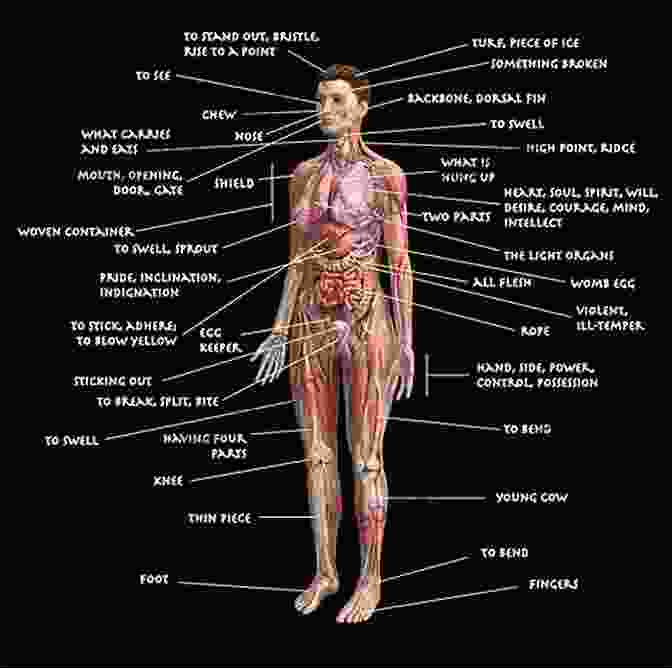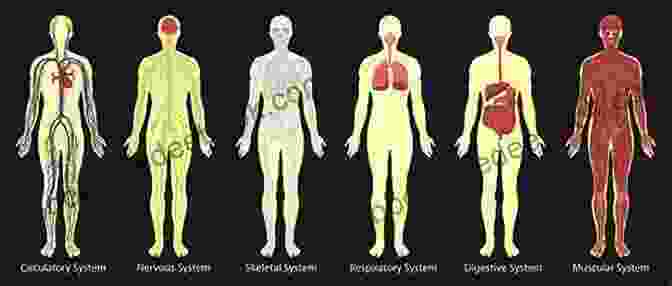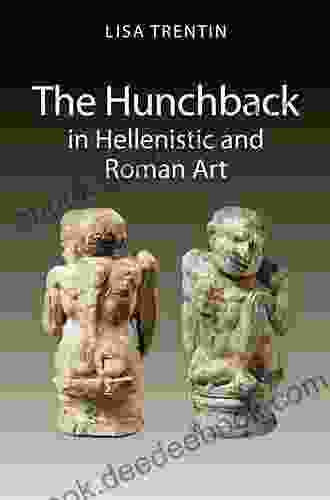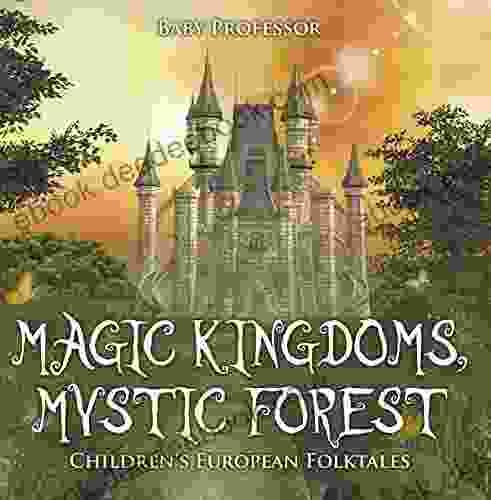How Your Body Works: Anatomy and Physiology

The human body is an incredibly complex machine, made up of trillions of cells that work together to perform a wide range of functions. In order to understand how the body works, it is helpful to have a basic understanding of its anatomy and physiology.
Anatomy
Anatomy is the study of the structure of the body. This includes the study of the body's organs, bones, muscles, and other tissues. Anatomists use a variety of techniques to study the body, including dissection, imaging, and microscopy.
5 out of 5
| Language | : | English |
| File size | : | 3737 KB |
| Screen Reader | : | Supported |
| Print length | : | 42 pages |
Organs
Organs are groups of tissues that work together to perform a specific function. The body has many different organs, including the heart, lungs, liver, and kidneys. Each organ has a unique structure that is adapted to its specific function.
Bones
Bones are hard, mineralized tissues that provide support and protection for the body. The body has 206 bones, which are divided into two main types: axial bones and appendicular bones.
- Axial bones are located along the midline of the body and include the skull, spine, and rib cage.
- Appendicular bones are located in the limbs and include the arms, legs, hands, and feet.
Muscles
Muscles are soft tissues that allow the body to move. There are three types of muscles: skeletal muscles, smooth muscles, and cardiac muscles.
- Skeletal muscles are attached to bones and are responsible for voluntary movement.
- Cardiac muscles are found in the heart and are responsible for pumping blood.
li>Smooth muscles are found in the walls of organs and are responsible for involuntary movement, such as the movement of food through the digestive tract.
Other tissues
In addition to organs, bones, and muscles, the body also contains a variety of other tissues, including:
- Connective tissues, such as tendons and ligaments, connect different tissues together.
- Adipose tissue, also known as fat, stores energy and insulates the body.
- Nervous tissue, which includes the brain, spinal cord, and nerves, is responsible for communication and control.
- Epithelial tissue lines the surfaces of the body and protects it from the environment.
Physiology
Physiology is the study of how the body functions. This includes the study of the body's organ systems, how they interact with each other, and how they maintain homeostasis.
Organ systems
The body is made up of several organ systems, each of which has a specific function. The major organ systems are:
- Integumentary system: This system consists of the skin, hair, and nails. It protects the body from the environment and helps regulate body temperature.
- Skeletal system: This system consists of the bones and joints. It provides support and protection for the body and allows for movement.
- Muscular system: This system consists of the muscles. It allows the body to move.
- Nervous system: This system consists of the brain, spinal cord, and nerves. It controls communication and coordination within the body.
- Endocrine system: This system consists of the glands. It produces and secretes hormones, which regulate various body functions.
- Cardiovascular system: This system consists of the heart, blood vessels, and blood. It pumps blood throughout the body, delivering oxygen and nutrients to cells.
- Lymphatic system: This system consists of the lymph nodes, lymph vessels, and lymphatic fluid. It helps to fight infection and maintain fluid balance.
- Respiratory system: This system consists of the lungs and airways. It allows the body to exchange oxygen and carbon dioxide with the environment.
- Digestive system: This system consists of the mouth, esophagus, stomach, small intestine, large intestine, and anus. It breaks down food and absorbs nutrients.
- Urinary system: This system consists of the kidneys, ureters, bladder, and urethra. It filters blood and produces urine, which removes waste products from the body.
- Reproductive system: This system consists of the reproductive organs. It produces gametes (eggs and sperm) and allows for reproduction.
Homeostasis
Homeostasis is the body's ability to maintain a stable internal environment. This is essential for normal functioning, as even small changes in the body's internal environment can have serious consequences.
The body uses a variety of mechanisms to maintain homeostasis, including:
- Feedback mechanisms: These mechanisms detect changes in the internal environment and trigger responses that counterbalance those changes.
- Buffer systems: These systems help to neutralize acids and bases and maintain a stable pH in the body.
- Hormones: These chemical messengers are produced by glands and help to regulate a variety of body functions.
The human body is an incredibly complex machine, but by understanding its anatomy and physiology, we can better appreciate how it works and how to keep it healthy.
If you are interested in learning more about the human body, there are a number of resources available online and in libraries. You can also take courses in anatomy and physiology at many colleges and universities.
Images


5 out of 5
| Language | : | English |
| File size | : | 3737 KB |
| Screen Reader | : | Supported |
| Print length | : | 42 pages |
Do you want to contribute by writing guest posts on this blog?
Please contact us and send us a resume of previous articles that you have written.
 Book
Book Page
Page Chapter
Chapter Text
Text Story
Story Genre
Genre Magazine
Magazine Paragraph
Paragraph Sentence
Sentence Bookmark
Bookmark Shelf
Shelf Glossary
Glossary Foreword
Foreword Synopsis
Synopsis Manuscript
Manuscript Scroll
Scroll Codex
Codex Bestseller
Bestseller Classics
Classics Autobiography
Autobiography Memoir
Memoir Reference
Reference Encyclopedia
Encyclopedia Dictionary
Dictionary Thesaurus
Thesaurus Narrator
Narrator Catalog
Catalog Card Catalog
Card Catalog Borrowing
Borrowing Stacks
Stacks Archives
Archives Research
Research Scholarly
Scholarly Academic
Academic Rare Books
Rare Books Special Collections
Special Collections Interlibrary
Interlibrary Thesis
Thesis Storytelling
Storytelling Book Club
Book Club Rachel Thomasian
Rachel Thomasian Rebecca Ascher Walsh
Rebecca Ascher Walsh Cindy Nichols
Cindy Nichols Betsy R Rosenthal
Betsy R Rosenthal Sarah Veblen
Sarah Veblen Rob Wildwood
Rob Wildwood N D Wilson
N D Wilson Bob Vanderberg
Bob Vanderberg Perry Hargrove
Perry Hargrove Jerry Lawler
Jerry Lawler Carolyn Harris
Carolyn Harris Tracy Jamar
Tracy Jamar Rick Bonus
Rick Bonus Penelope Chetwode
Penelope Chetwode Dexx Williams
Dexx Williams Michael Mcalister
Michael Mcalister William K Powers
William K Powers Ingeborg Bachmann
Ingeborg Bachmann Jessie Kelley
Jessie Kelley Jude Collins
Jude Collins
Light bulbAdvertise smarter! Our strategic ad space ensures maximum exposure. Reserve your spot today!

 Roger TurnerLightroom Mobile Presets: Unleash the Power of Professional Editing on Your...
Roger TurnerLightroom Mobile Presets: Unleash the Power of Professional Editing on Your... Anton FosterFollow ·8.1k
Anton FosterFollow ·8.1k Noah BlairFollow ·16.2k
Noah BlairFollow ·16.2k Milton BellFollow ·8k
Milton BellFollow ·8k Shannon SimmonsFollow ·12.1k
Shannon SimmonsFollow ·12.1k Carlos DrummondFollow ·19.4k
Carlos DrummondFollow ·19.4k Arthur C. ClarkeFollow ·8.3k
Arthur C. ClarkeFollow ·8.3k William FaulknerFollow ·14.7k
William FaulknerFollow ·14.7k Milan KunderaFollow ·11.9k
Milan KunderaFollow ·11.9k

 E.E. Cummings
E.E. CummingsThe Routledge International Handbook on Fear of Crime
Fear of crime is a serious problem that can...

 Fletcher Mitchell
Fletcher MitchellThe Hunchback in Hellenistic and Roman Art: A...
The hunchback, or kyphosis, is a physical...

 Victor Turner
Victor TurnerA Comprehensive Guide to Needle Felting for Moms:...
Needle felting, a captivating craft...

 Joseph Foster
Joseph FosterWhere is Scandinavia?
Scandinavia is a region in...

 Leon Foster
Leon FosterNovel Shades of Magic: A Masterpiece of Magical...
An Enthralling...
5 out of 5
| Language | : | English |
| File size | : | 3737 KB |
| Screen Reader | : | Supported |
| Print length | : | 42 pages |












